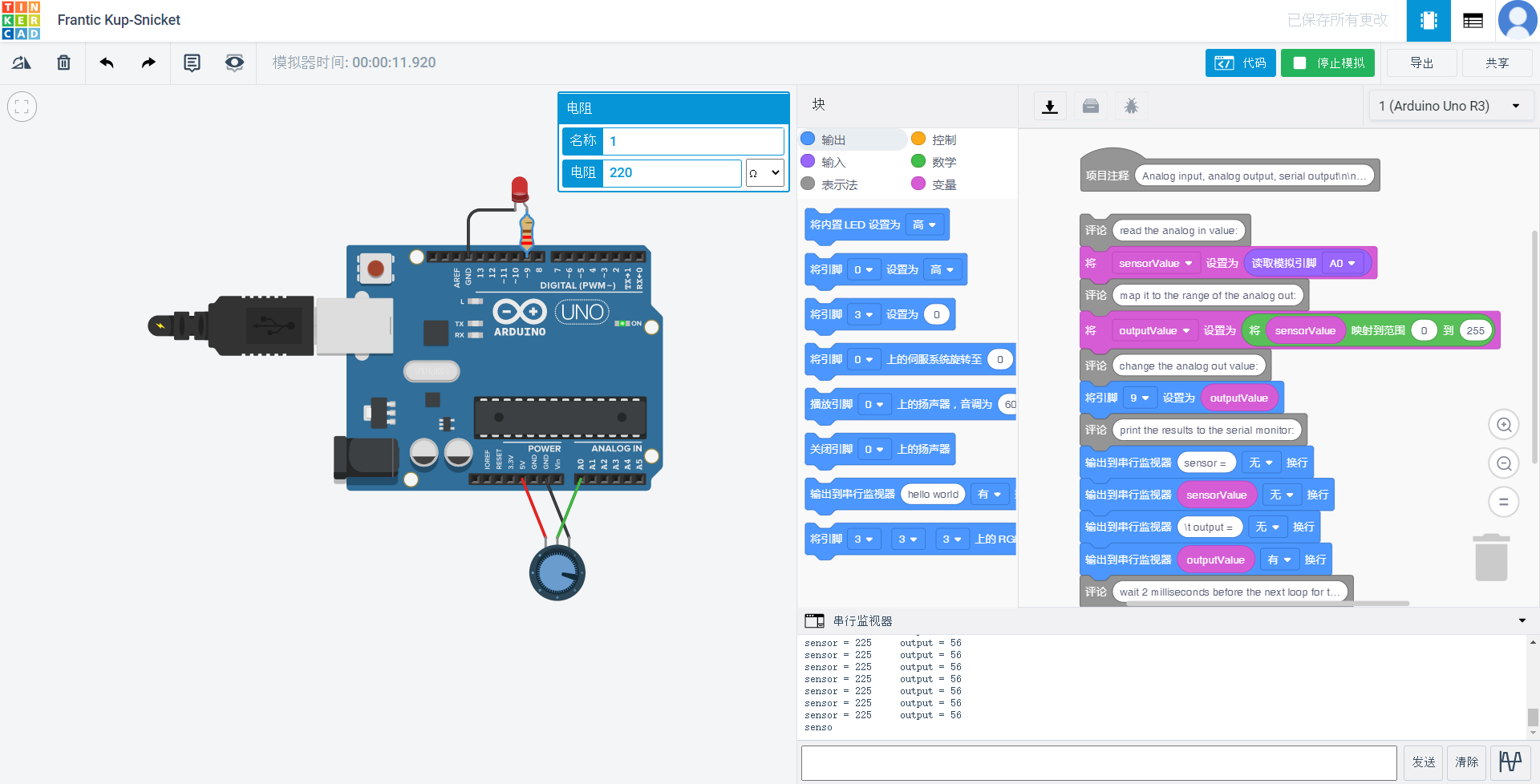
/*
Analog input, analog output, serial output
Reads an analog input pin, maps the result to a
range from 0 to 255 and uses the result to set
the pulsewidth modulation (PWM) of an output
pin. Also prints the results to the serial
monitor.
The circuit:
* potentiometer connected to analog pin 0.
Center pin of the potentiometer goes to the
analog pin. side pins of the potentiometer go
to +5V and ground
* LED connected from digital pin 9 to ground
created 29 Dec. 2008
modified 9 Apr 2012
by Tom Igoe
This example code is in the public domain.
*/
int sensorValue = 0;
int outputValue = 0;
void setup()
{
pinMode(A0, INPUT);
pinMode(9, OUTPUT);
Serial.begin(9600);
}
void loop()
{
// read the analog in value:
sensorValue = analogRead(A0);
// map it to the range of the analog out:
outputValue = map(sensorValue, 0, 1023, 0, 255);
// change the analog out value:
analogWrite(9, outputValue);
// print the results to the serial monitor:
Serial.print("sensor = ");
Serial.print(sensorValue);
Serial.print("\t output = ");
Serial.println(outputValue);
// wait 2 milliseconds before the next loop for the
// analog-to-digital converter to settle after the
// last reading:
delay(2); // Wait for 2 millisecond(s)
}




 浙公网安备 33010602011771号
浙公网安备 33010602011771号